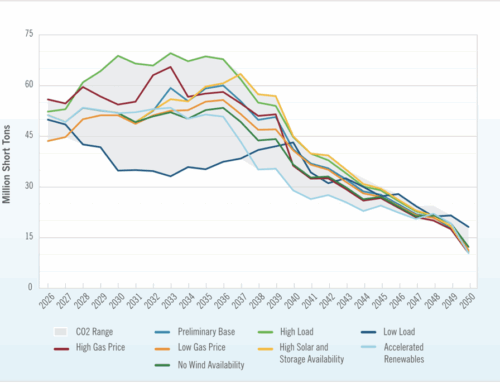9 Investing Moves To Make After Inflation Jumped 3% & The Fed Might Keep Cutting Rates
October 1, 2025
Inflation is hovering near 3% again, and the Federal Reserve (the Fed) has signaled it could keep cutting interest rates. For most people, that headline raises a bigger question: What should I do with my money?
Find Out: Money Influencer Delyanne Barros: Why Boring Could Be Best for Investing
Read Next: Mark Cuban Tells Americans To Stock Up on Consumables as Trump’s Tariffs Hit — Here’s What To Buy
Investing experts translated the Fed-speak into plain steps you can take right now.
Rate cuts usually signal that growth is cooling or the labor market is softening, said Nicholas Juhle, CFA, chief investment officer at Greenleaf Trust.
“In fact, cuts are intended to stimulate the economy and create jobs,” he said, by lowering borrowing costs for households and businesses so spending and hiring don’t stall. The goal is to bring stability back to the economy and buy time for things to pick up. If policy works, a downturn can be avoided; if it doesn’t, “we could experience a recession sooner than expected.”
Learn More: Suze Orman: 3 Biggest Mistakes You Can Make as an Investor
While a single rate cut is not going to have a real or immediate impact on bigger investment accounts like 401(k) or IRA accounts, it will affect other high-yield bearing bank accounts, according to Robert Varghese, head of investments at Groundfloor. “You may see a decline in the rate of interest that the bank is offering,” he said.
Thus, investors should look to lock in higher yield where they can.
This might be a good time for refinancing debts, as well. Consumers will want to make sure they are paying the lowest interest rate possible on any borrowed funds, Juhle said. “So, consider refinancing your mortgage, car loan or other outstanding debts to take advantage of lower rates.”
It’s also a good time to pay down high-interest credit card debt to free up money you can invest as “debt compounds at the fastest rate,” according to Charles Urquhart, CFA and founder of Fixed Income Resources.
“Homeowners should consider refinancing their mortgage when interest rates decrease but only if they plan to stay in the property for an extended period,” he added.
Stocks have gone up a lot this year compared to bonds, so it may be time to rebalance your portfolio to the appropriate asset allocation targets to ensure you aren’t positioned with too much or too little risk, Juhle advised.
Varghese added that while you don’t want to make any significant shifts based on a single Fed rate cut, those who want to protect against inflation while earning yield may want to look at something like TIPS (Treasury inflation-protected securities).
“Whether it is this moment or any moment, people should avoid investing in anything they do not understand,” he added.
Investors should not hop on any hot market trends after the Fed makes its decisions, Urquhart said. “Market gains tend to disappear as quickly as they appear. Investors who maintain a long-term perspective should disregard all temporary market fluctuations.”
Your investment time horizon remains more crucial than any Federal Reserve actions because they will eventually leave the market, Urquhart said. “The key to investment success lies in staying invested over time rather than attempting to predict market movements.”
The best thing you can do is to “stay calm, form a plan and stick to it,” Varghese said. “Public markets can be volatile. You will see big swings to the upside as well as the downside on various kinds of ‘news.’” The more you can block out the noise and just focus on saving and investing based on a predetermined plan, the better off you will be and the more wealth you will likely create.
For beginning investors, Urquhart suggested investing in a diversified fund that includes either a balanced or target-date option. “The fund provides an effortless method to distribute investments between stocks and bonds while avoiding attempts to predict Federal Reserve decisions.”
Those with only a small amount of money to invest monthly should look into a low-cost index fund or target-date fund while setting up automatic investments, Urquhart added. “The practice of consistent investing over time produces better financial results than attempting to predict every Federal Reserve announcement.”
More From GOBankingRates
-
Here’s What It Costs To Charge a Tesla Monthly vs. Using Gas for a Nissan Altima
-
Why You Should Start Investing Now (Even If You Only Have $10)
This article originally appeared on GOBankingRates.com: 9 Investing Moves To Make After Inflation Jumped 3% & The Fed Might Keep Cutting Rates
Search
RECENT PRESS RELEASES
Related Post




